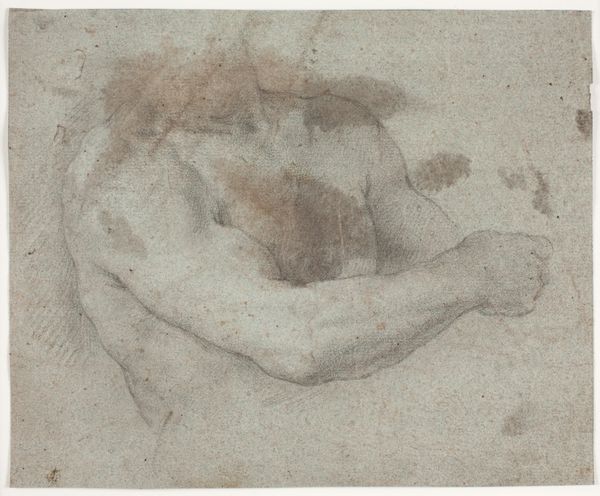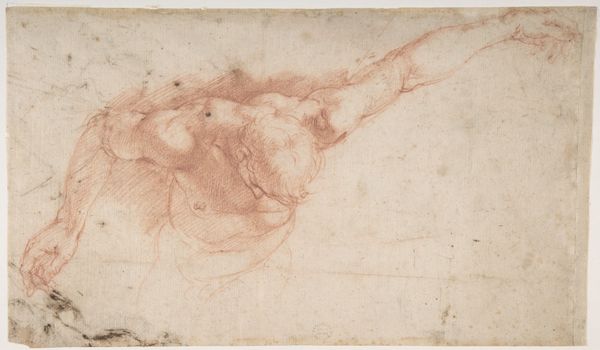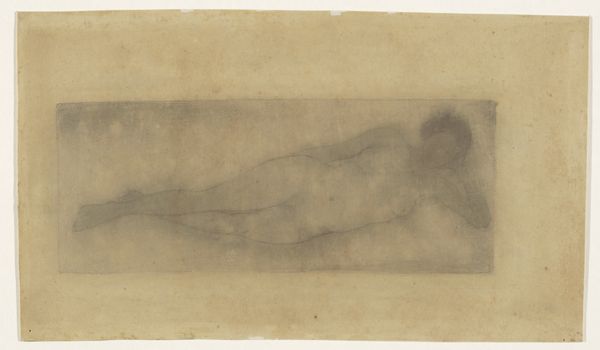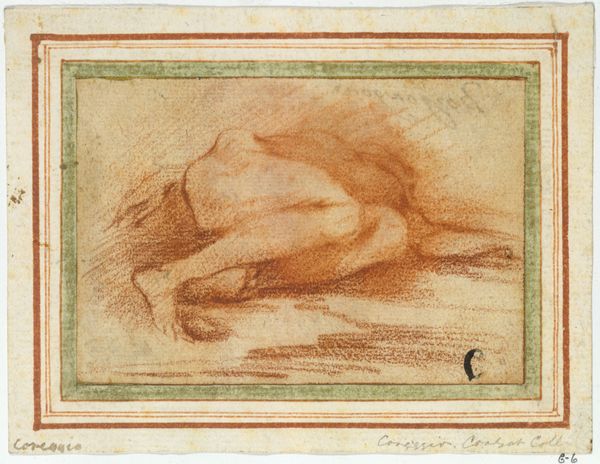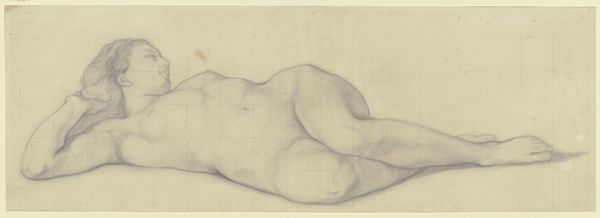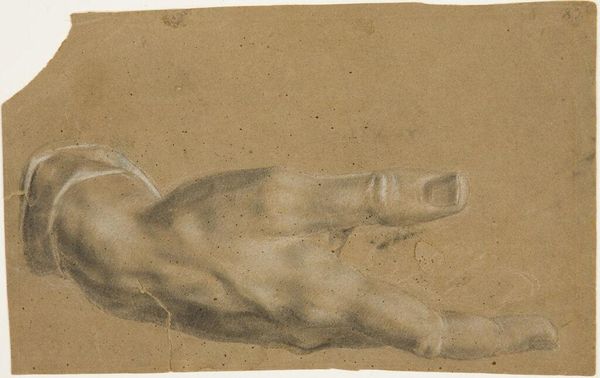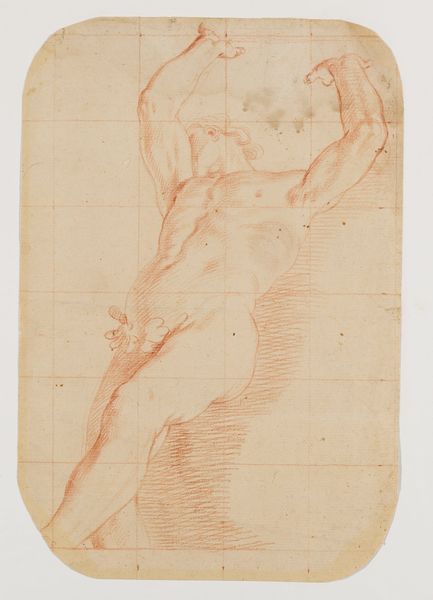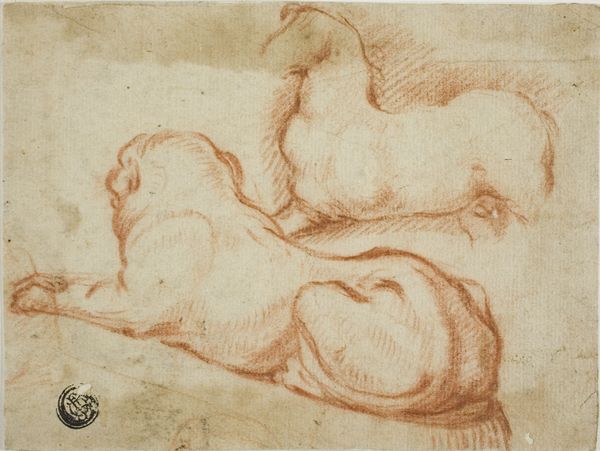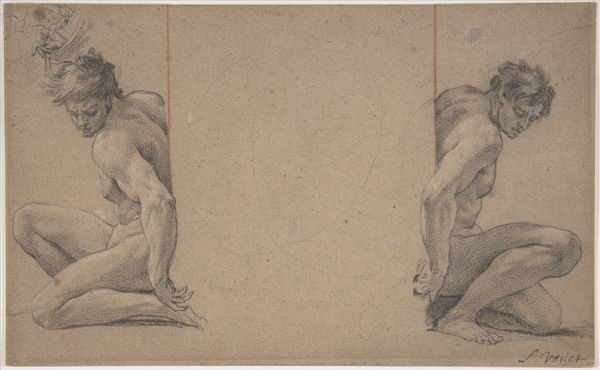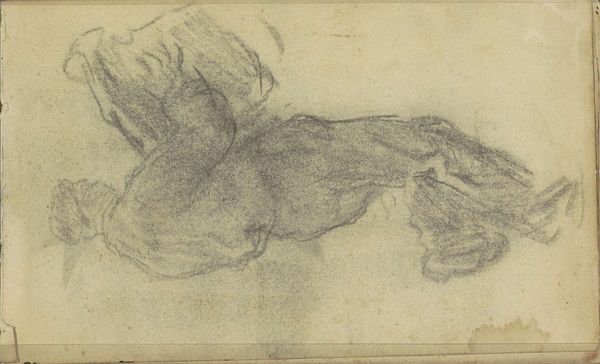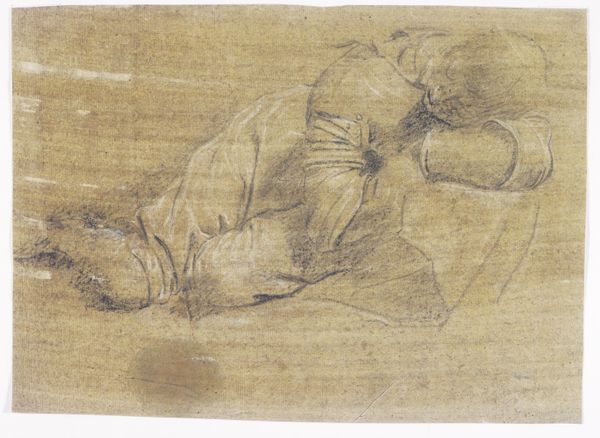
drawing, charcoal
#
portrait
#
drawing
#
baroque
#
charcoal drawing
#
charcoal
#
academic-art
Dimensions: 379 mm (height) x 429 mm (width) (bladmaal)
Curator: Here we have a "Male Nude," a charcoal drawing by Giovanni Battista Gaulli, dating sometime between 1639 and 1709. What are your initial thoughts on this work? Editor: Well, there's something incredibly languid and vulnerable about it. The pose, that drowsy look... It's intimate, like catching someone unguarded in their sleep. Also, the subtle use of color! Gives me that fading light, golden hour vibe... Curator: The Baroque period, during which Gaulli was active, was intensely interested in representing the human body, and of course often emphasizing drama. In considering our contemporary context, what possibilities might be available if we looked at such a figure through the lens of power, objectification, or even fragility? Editor: Ooh, I get what you mean. We could explore it as a study in vulnerability, how societal expectations of masculinity collide with this tender portrayal. You know, flipping the script on the male gaze, perhaps? I like it! Curator: Exactly. And thinking about academic art of the time, works like this were often exercises, but even those artistic decisions and the conventions themselves are so linked with broader power dynamics and philosophical understandings of the body at the time. Editor: That’s very true! Also the softness and fluidity that Gaulli creates, with those almost watercolor-like charcoal washes—it creates this dreamy effect... Makes you wonder about the model’s thoughts at that very moment. Was he bored? Tired? Thinking about lunch? I'm being silly, of course, but still! Curator: Not silly at all. It humanizes him. Editor: Precisely. In a world of superhero physiques and unattainable ideals, this feels refreshing, like a whispered secret. Curator: Absolutely. Placing this artwork in dialogue with those expectations creates possibilities. We see not just skill, but a conversation with societal norms around male presentation throughout history. Editor: You’ve given me so much to think about—this wasn't just a sketch; it was like peering through a looking glass. I will be reflecting on art history and our current context a lot longer today, for sure. Curator: Likewise. It shows the incredible potential when art engages with cultural discourses, so even centuries-old pieces maintain their powerful presence.
Comments
No comments
Be the first to comment and join the conversation on the ultimate creative platform.
